Explore our library, where insights, press articles, and events are organized by tags, making it easy to find relevant topics.
linkedin February 2025 Is luxury elder care the next frontier?
Is #luxury #elder #care the next frontier? This weekend, I came across an intriguing Financial Times article about the rise of high-end care homes in the…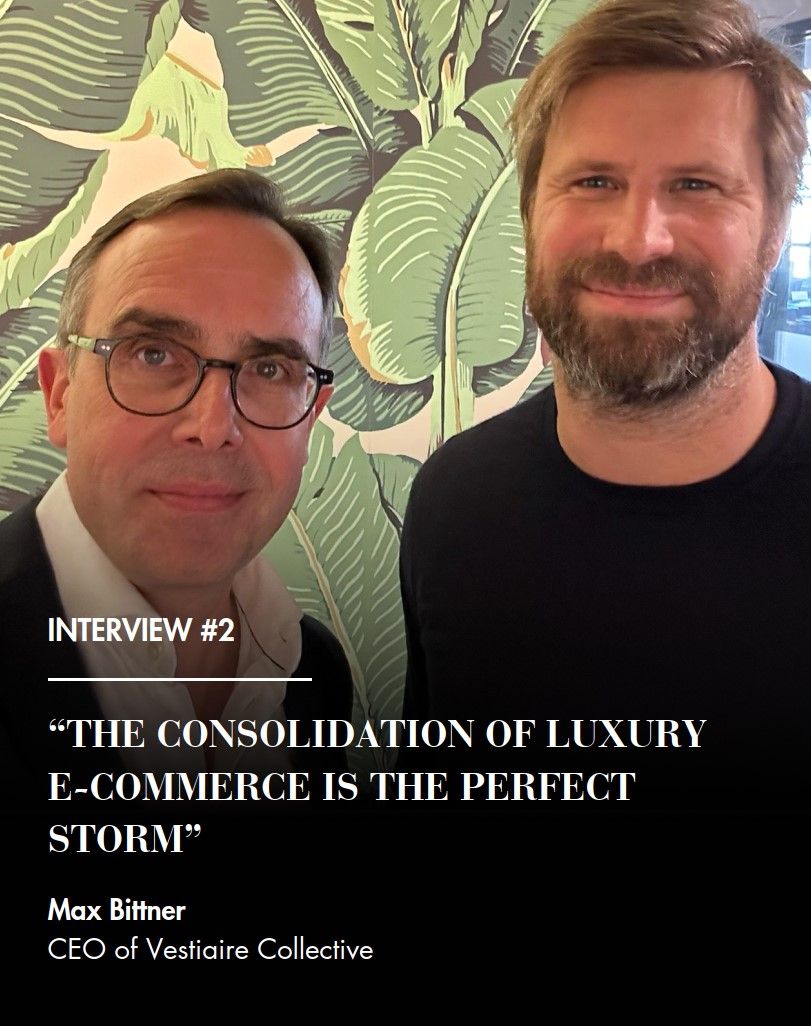
linkedin Interview #2 - Max Bittner; CEO, Vestiaire Collective
#Luxury E-commerce’s Perfect Storm and the Future of #Resale These were the key themes of my recent conversation with Maximilian Bittner during our meeting in hashtag#NewYorkCity. Max began his career at McKinsey & Company before founding and leading Lazada Group in Singapore. In 2019, he joined Vestiaire Collective as an investor, CEO, and Chairman, recognizing a massive scalability opportunity in the luxury resale market.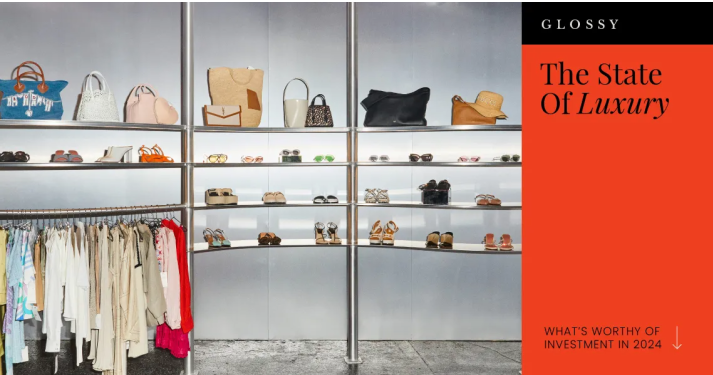
press October 2024 What's next for luxury e-commerce
glossy.com by Jill ManoffAchim discusses his perspective on the future of luxury e-commerce with Glossy's Jill Manoff.
Luxury brands are increasingly by passing multi-brand e-tailers, offering direct-to-consumer sales with full product ranges, exclusive perks, and enhanced omnichannel experiences. Many once highly valued e-commerce platform shave struggled to achieve profitable growth in a high-interest rate environment, while others, such as Mytheresa, have thrived by focusing their differentiation strategy on curation rather than low prices, and by building customer loyalty through exclusive services and events. Although luxurye-commerce is projected to grow by 20 to 30 percent, physical retail will remain essential for luxury brands.
event September 2025 Chalhoub Group in:sight summit
Back in Dubai for the Chalhoub Group’s in:sight summit, Achim had the pleasure of discussing the future of luxury in the GCC. The region’s economy is experiencing steady growth, fueled by robust GDP, low inflation, and rising consumer confidence. Furthermore, non-oil sectors are building momentum and the economic decoupling is gaining traction. The beauty sector continues to outperform, and while Dubai maintains its position as the region’s luxury hub, Saudi Arabia requires new models to unlock its full potential. Across the GCC, consumers are becoming true luxury connoisseurs who are globally minded and trend-savvy.
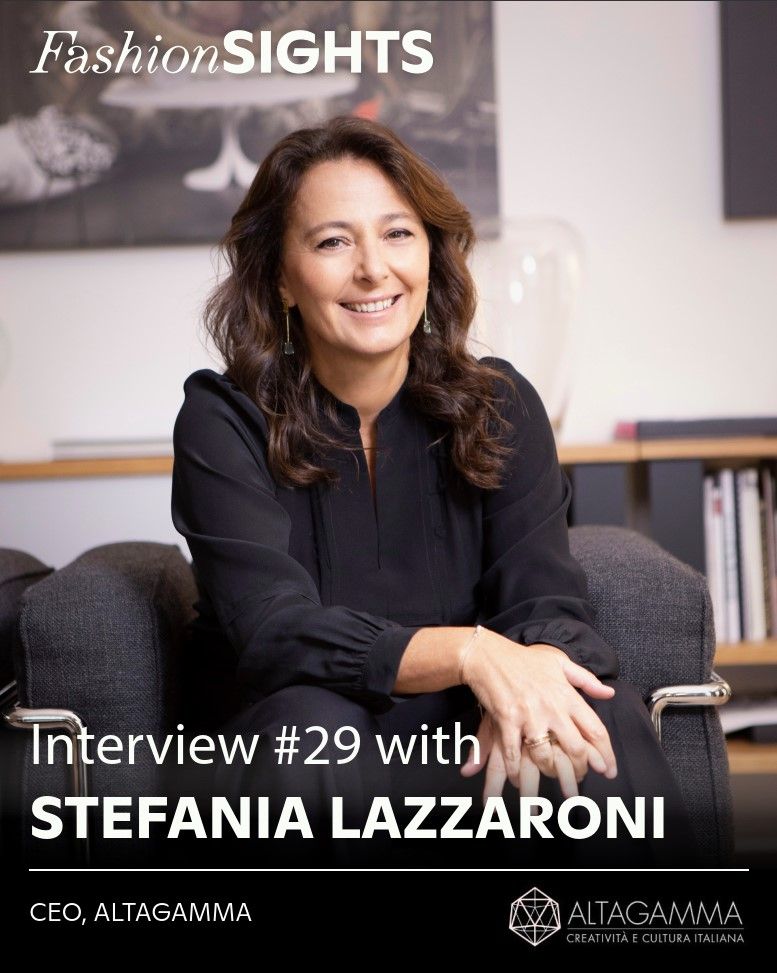
linkedin June 2025 Interview #29 - Stefania Lazzaroni, CEO Altagamma
What ist the Future of Luxury? This was the focus of my recent conversation with Stefania Lazzaroni, CEO of Altagamma, the Italian Luxury Goods Association. Since 2013, Stefania has spearheaded initiatives that promote Italian excellence globally, focusing on innovation, sustainability, and digital transformation. She combines strategic insight with a passion for Italian craftsmanship and cultural heritage. Stefania and I first met some 10 years ago. In our conversation, we explored the differences between Italian and French hashtag#luxury companies, reflected on how the industry has evolved since the financial crisis, and discussed why the future of luxury lies in experiences, well-being, and emotional value. This insightful exchange is part of my interview series for my upcoming book on The Future of Fashion.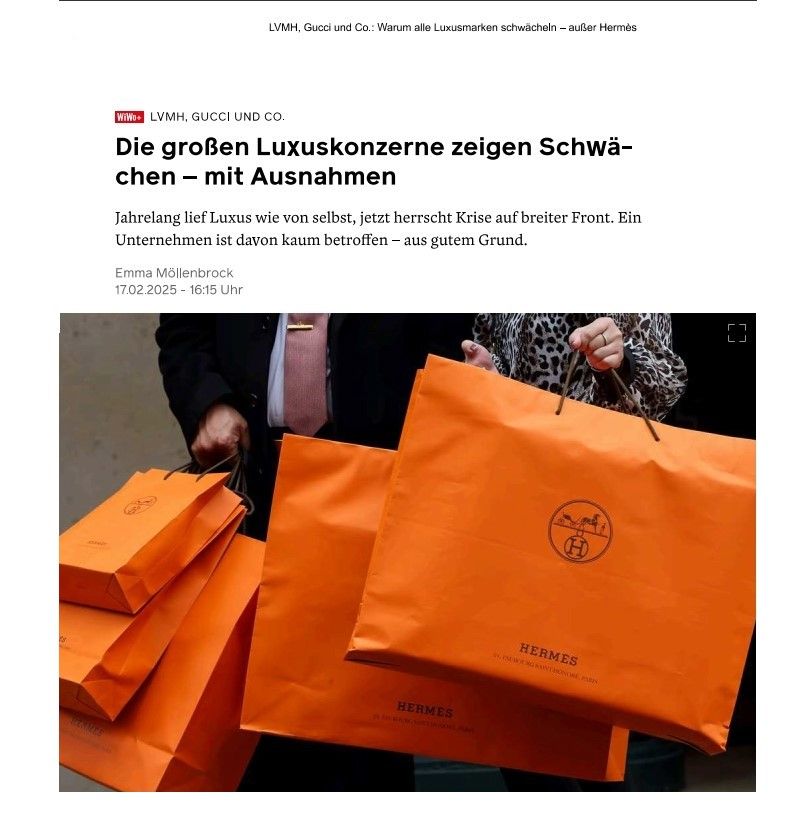
press February 2025 Major luxury groups show weaknesses - with exceptions
WirtschaftsWoche by Emma MöllenbrockAchim discusses the broader challenges of struggling luxury houses and success factors that set certain brands apart from its competitors.
The luxury sector is facing challenges as consumer demand weakens and growth driven by price increases reached its limits. Achim highlights two successful categories: zeitgeist brands that thrive on trends, and exclusive high-end brands like Hermes, benefiting from wealthy buyers whose spending remains stable during economic downturns. In contrast, luxury brands focusing on volume rather than exclusivity, such as Gucci and LVMH, are more vulnerable to economic fluctuations. Achim emphasizes that profitability and an adapted pricing strategy will be key to sustaining growth in the future.

press March 2025 What Happens to a Multibillion-Dollar Luxury Brand When the ...
WSJ by Rory SatranAchim comments on fashion’s ongoing musical chairs and highlights the financial impact of transition periods.
During interim periods without a creative director, brands often rely on classic bestsellers, but this approach doesn’t always prevent revenue declines. In a fragile macroeconomic environment with declining consumer demand, frequent creative director changes signal deeper sales problems rather than strategic moves in a frantic bid for success. While these changes typically impact the top line, Achim urges not to underestimate the “time lapse” effect, noting that new creative directors typically need at least two collections to make a meaningful impact, delaying potential revenue recovery.

press March 2025 What luxury can learn from the watch resale playbook
Vogue Business by Milena LazazzeraAchim shares his opinion on the opportunities and challenges of resale in fashion and luxury.
Resale has become a major force in luxury, with watches leading the way due to limited supply, durability, and high value retention. Their scarcity fuels demand and strengthens strong resale prices. Fashion faces greater challenges in resale, as items like cashmere and shoes degrade over time, and the industry often overproduces rather than limiting supply, reducing long-term value. As Achim notes, this makes resale more complex, requiring a careful approach. Many brands still underestimate consumer demand or struggle to integrate resale into their business. A key lesson from watches is the importance of authentication and collaboration with trusted resale platforms to protect brand equity and unlock new opportunities in the secondary market.
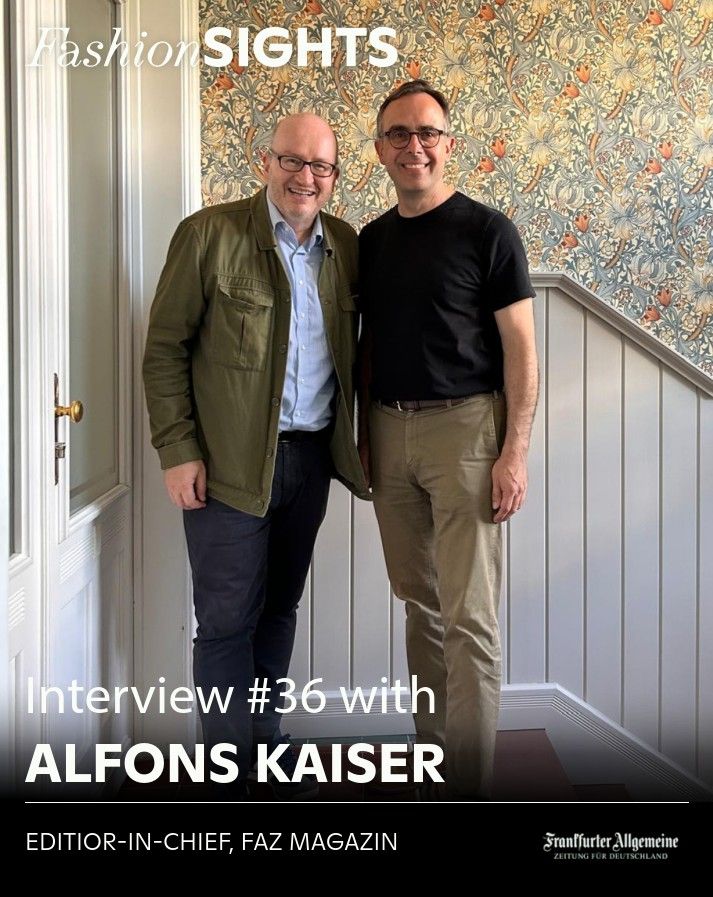
linkedin Interview #36 - Alfons Kaiser, Editor-in-chief, FAZ Magazin
Why #Luxury Fulfills the Need for #Belonging and why We#Lack #True #Fashion #Creators Today These were the two central themes of my recent conversation with Dr. Alfons Kaiser, fashion critic at Frankfurter Allgemeine Zeitung Allgemeine Zeitung and editor-in-chief of FAZ Magazin. Together, we explored the evolving cultural role of fashion and luxury: - Fashion today is no longer just about style: it’s about visibility, social positioning, and emotional currency. - Young people increasingly define themselves through image and consumption rather than cultural capital. - Luxury brands have evolved from being mere retailers to becoming cultural powerhouses. - The future of luxury lies in shifting from objects to environments, from external display to internal meaning. We also reflected on the fading role of the fashion designer as a true creative force. The industry today favors marketing-driven collections and industrialized production cycles over bold ideas and strong creative voices. Visionaries are being replaced by managers. That shift may serve business efficiency - but it’s a loss for culture. Alfons is a strong voice in German fashion: a respected commentator, critic, and intellectual, and the well-known biographer of Karl Lagerfeld. What started as breakfast at our new offices turned into a three-hour exchange on fashion, culture - and business. This conversation is part of my ongoing series of interviews for my upcoming book on the Future of Fashion.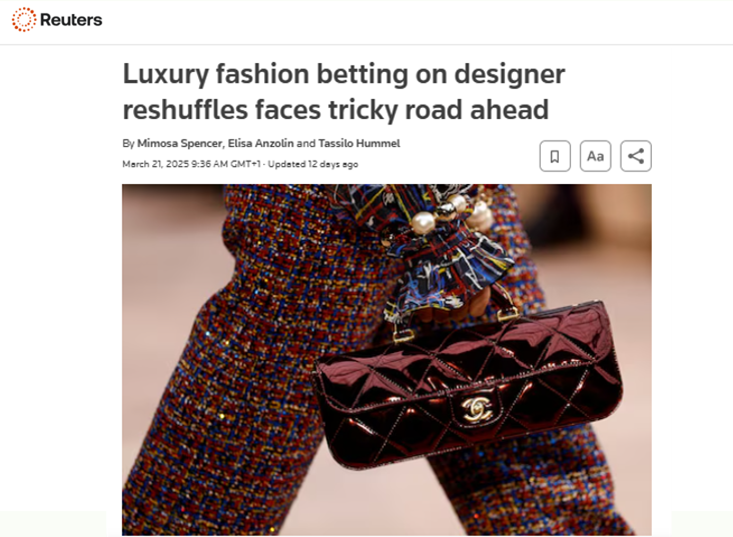
press March 2025 Luxury fashion betting on designer reshuffles faces tricky r...
Reuters by Mimosa Spencer, Elisa Anzolin & Tassilo HummelAchim shares his opinion on fashion’s current high musical chairs and their broader impact on the industry.
Luxury fashion houses are undergoing unprecedented designer reshuffles to boost brand appeal amid slowing sales and shopper fatigue. Achim notes that while brands often expect quick results from these creative leadership changes, the internal impact across departments - especially merchandising and marketing - takes time to become visible to consumers. He emphasizes that the ongoing wave of creative leadership changes signals a broader inflection point for the luxury industry. While proactive change is essential during periods of stagnation, brands must weigh short- and long-term consequences, which often exceed initial expectations in today’s volatile market.
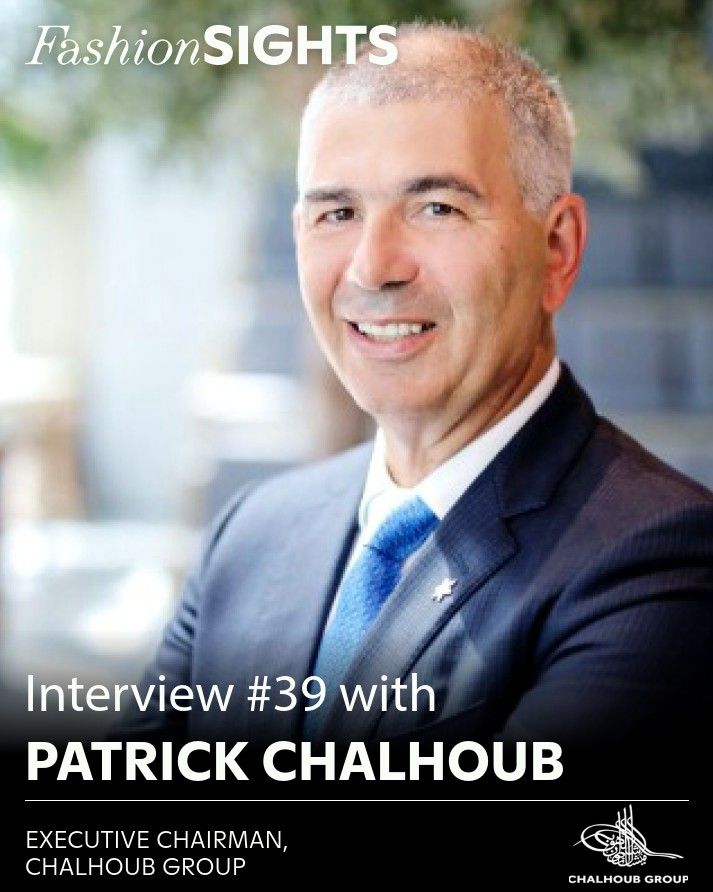
linkedin Interview #39 - Patrick Chalhoub, Executive Chairman, Chalho...
The Chalhoub Group is the largest luxury goods partner and retailer in the GCC, with a strong focus on fashion, beauty, and lifestyle. This family-owned group collaborates with iconic global brands such as Louis Vuitton, Christian Dior Couture, Lancôme, Carolina Herrera, and TORY BURCH, while also developing homegrown retail concepts tailored to the region. In our discussion, we explored how luxury has become deeply embedded in everyday life in the Middle East - how local tastes have evolved from status-driven prestige and logos to a more personal, expressive, and pleasure-oriented relationship with luxury. We also spoke about how the partnerships between global brands and local players have matured - moving beyond distribution into long-term, strategic collaboration. This conversation was another highlight in my journey to understand the transformation of fashion and luxury in the GCC - and to gather insights into where the industry is heading. It was recorded as part of my interview series for my upcoming book on the Future of Fashion.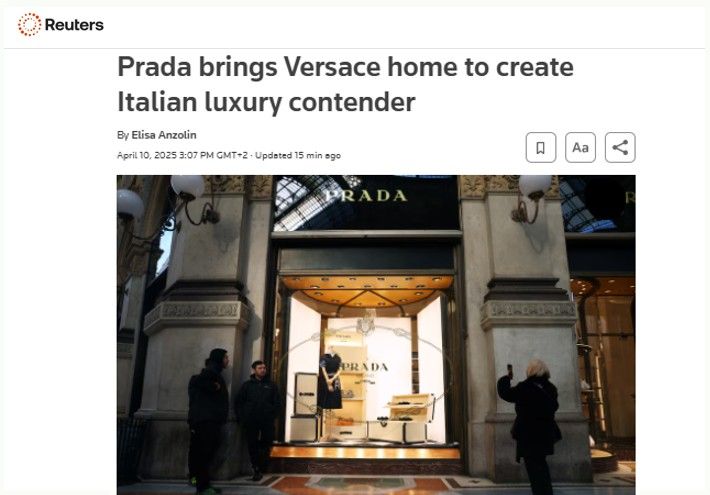
press April 2025 Prada brings Versace home to create Italian luxury contender
Reuters by Elisa AnzolinAchim comments on Prada’s acquisition of Versace and its significance for Europe’s luxury landscape.
Prada’s deal to buy Versace signals a strategic push to build a true Italian powerhouse in global fashion. Achim considers this a pivotal step toward rebalancing Europe’s luxury landscape, long dominated by French conglomerates. Despite Italy’s strong “Made in Italy” image of trust and quality, the country has lacked a player of comparable scale. This move brings Versace, previously owned by US-listed Capri Holdings, back under Italian control, marking a shift from fragmented past efforts to a more consolidated national vision. Achim notes that unlike earlier small-scale ventures that failed to gain traction, this deal carries real strategic weight and long-term ambition.
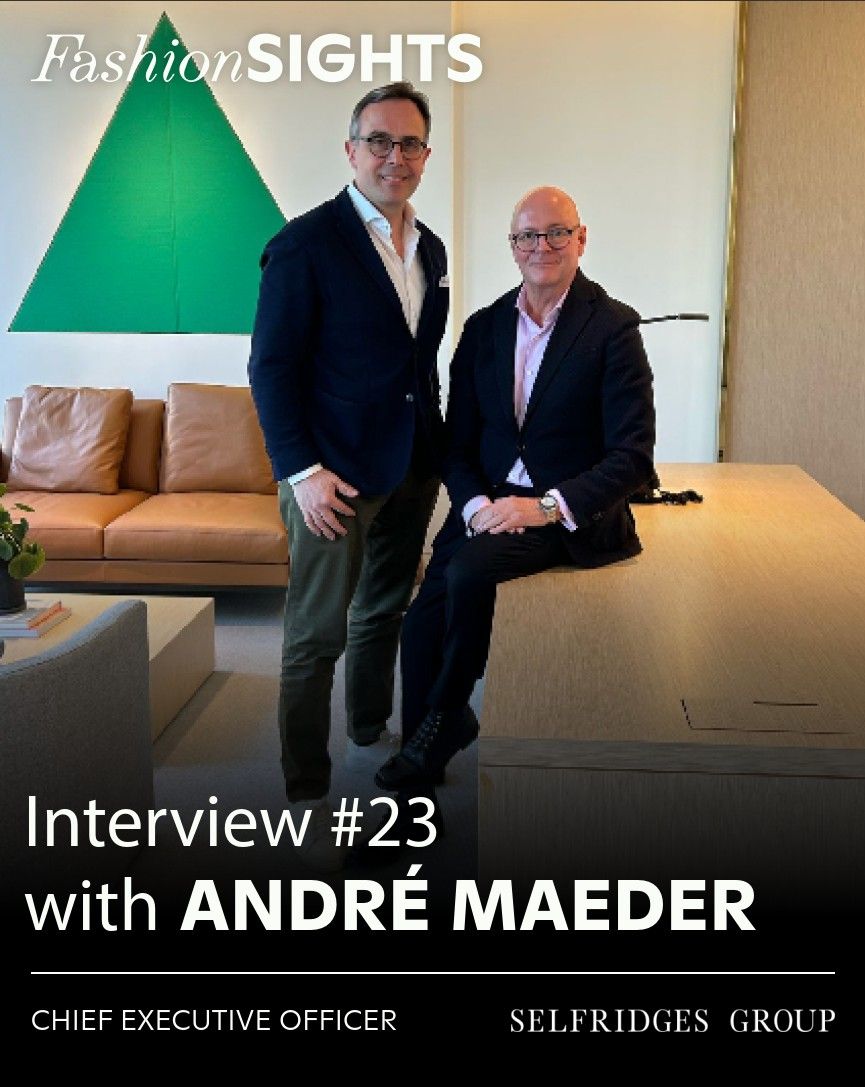
linkedin October 2025 Interview #23 - André Maeder, CEO Selfridges Group
Why the current #luxury #hangover is an opportunity to recalibrate. I had the pleasure of exchanging thoughts on the current slowdown of the luxury sector and the role of department stores in its recovery with my good friend André Maeder the CEO of Selfridges Group and a renowned retail industry leader and expert. He brings 50 years of professional experience, having held leadership roles at luxury retailers such as Harrods and THE KADEWE GROUP. We’ve known each other since his days in Metzingen with HUGO BOSS in 2008. Aspirational shoppers represent a substantial share of luxury sales, and their recent pullback has been a key driver of the industry’s slowdown. We discussed why brands cannot depend solely on the ultra-wealthy segment to navigate cyclical downturns, and how leveraging department stores as gateways and immersive spaces for both aspirational and affluent consumers might help the industry to overcome the challenges it is currently facing. Thank you, André, for your time - I truly enjoyed visiting you in London and having such an insightful conversation. Further highlights from my interview with André will be featured in my upcoming book on the Future of Fashion.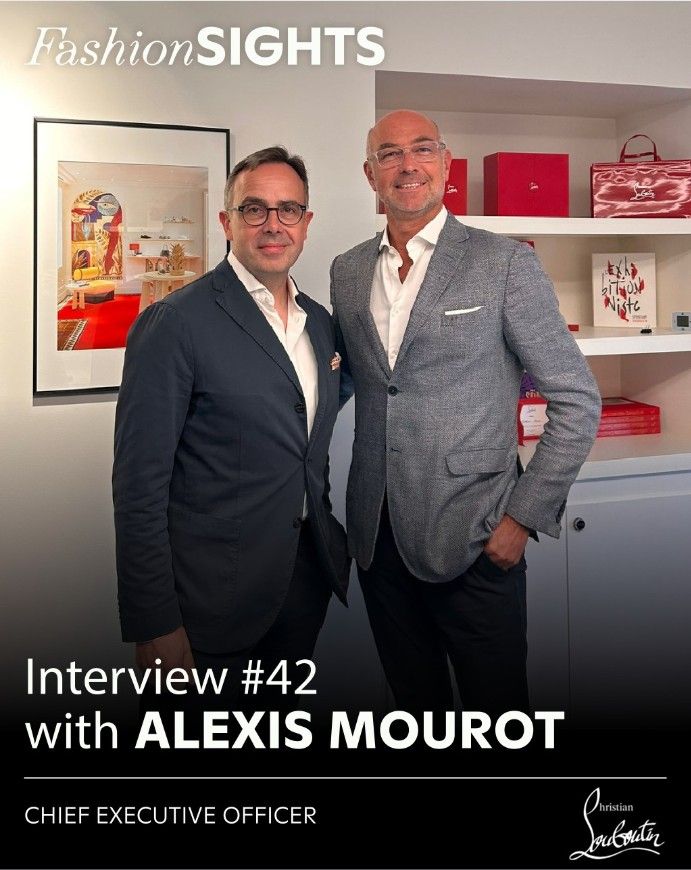
linkedin October 2025 Interview #42 - Alexis Mourot, CEO, Christian Louboutin
In a world chasing scale, the formula to success lies in specialization, craftsmanship, and strategic restraint. That conviction was at the core of my recent conversation with Alexis MOUROT, CEO of Christian Louboutin and one of the leading and most passionate voices in luxury. We discussed how the fashion and footwear industries have evolved over the past three decades: from the moment sneakers became a true luxury item to how Christian Louboutin turned its signature product into a competitive strength amid a shrinking high-heel market. Alexis also shared his perspective on the current luxury slowdown, why critical mass isn’t always the key driver to success, and how a renewed focus on authenticity and craftsmanship could define luxury’s next chapter.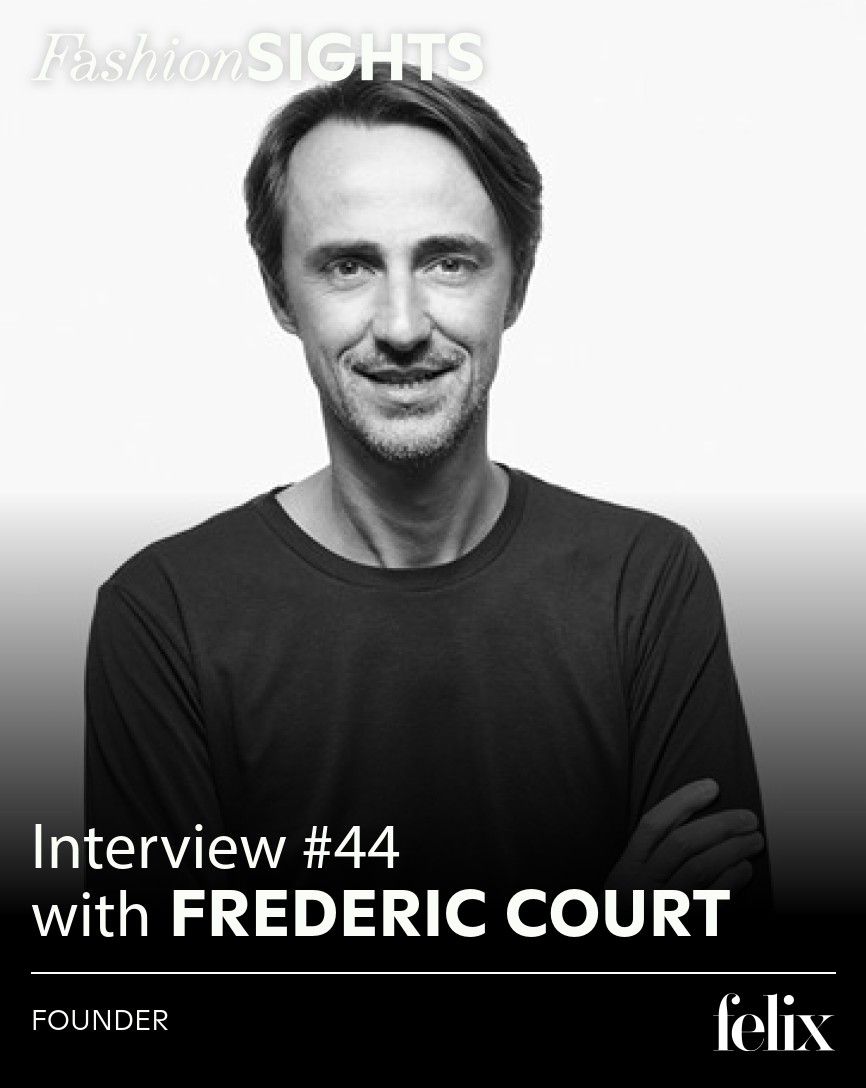
linkedin November 2025 Interview #44 with Frederic Court; Founder, Felix Capital
Few industries are as alluring - and as unpredictable - for financial investors as Fashion. It’s a theme I recently explored in conversation with Frederic Court, Founder of Felix Capital in London. Frédéric is one of the most influential voices at the intersection of fashion and finance - and our paths first crossed almost a decade ago when I launched the McKinsey & Company x The Business of Fashion collaboration. Felix Capital was among the first backers of BoF on their own journey into fashion. We discussed how fashion has evolved into an investable category, why it remains one of the most complex markets to navigate, and what makes success in this field so elusive. Frédéric also shared his perspective on the current luxury slowdown and his vision for the future of fashion and venture capital. A heartfelt thank you to Frédéric for taking the time to share such valuable insights. I truly enjoyed our exchange at Felix’s London office: an inspiring conversation and a thoughtful perspective on fashion’s inner economy. Further insights from this interview will be featured in FashionSIGHTS’ upcoming book, The Future of Fashion, which brings together leading voices shaping the industry’s next chapter.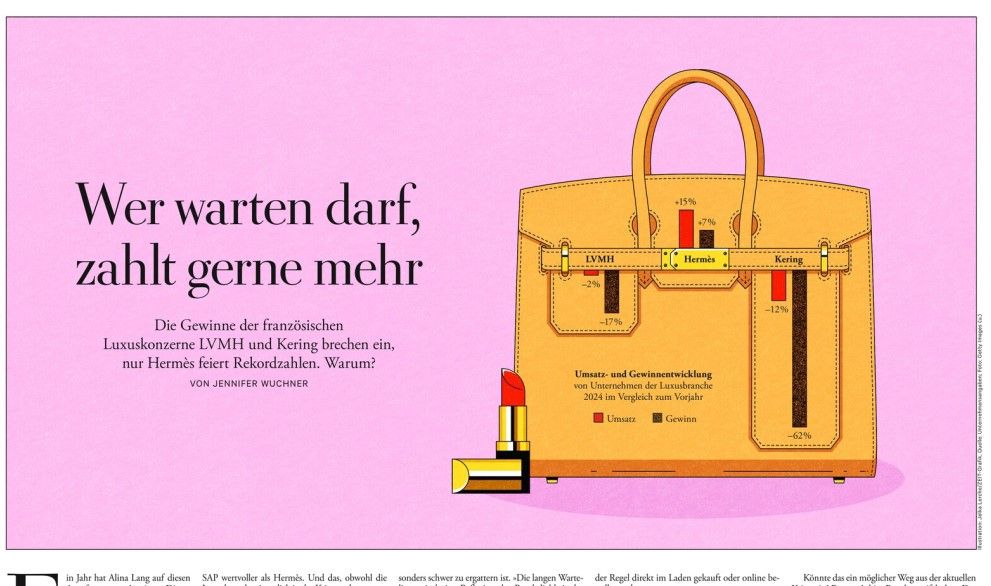
press May 2025 Those who choose to wait gladly pay more
Die Zeit by Jennifer WuchnerAchim reflects on why Hermès continues to thrive amid a broader luxury downturn.
While most luxury brands are reporting sharp revenue declines, Hermès remains one of the few brands still growing, thanks to a model based on exclusivity and controlled scarcity. With highly limited production and years-long waiting lists, the brand's desirability continues to grow. Unlike other luxury houses that have begun to expand their product lines to reach a broader audience and raised prices too aggressively, Achim notes that this strategy of artificial scarcity is what sets Hermès apart. In his view, chasing volume through entry-level segments won't solve the crisis, as the real money is still made in handbags, where margins are highest.
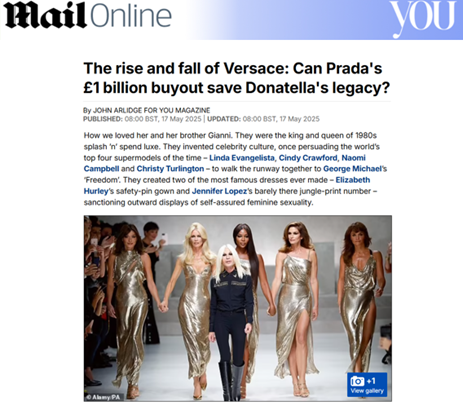
press May 2025 The rise and fall of Versace: Can Prada’s £1 billion buyout ...
Daily Mail You Magazine by John ArlidgeAchim shares his perspective on what is next for Versace after its acquisition by Prada Group.
With strong brand equity and a globally recognized identity, the foundations for Versace's new era are in place and Prada is a fitting new owner to build on. The Group brings cultural alignment, capital to invest, and strong product and marketing expertise. But structural change will be key, Achim notes. Versace's huge retail footprint doesn't match its current sales. He emphasizes the need to rethink its store strategy - possibly swapping some locations with Miu Miu - and anticipates leadership changes between Versace and Prada executives. These moves will set the stage for a broader creative and commercial reset. If executed well, Achim predicts significant sales growth in the coming years.
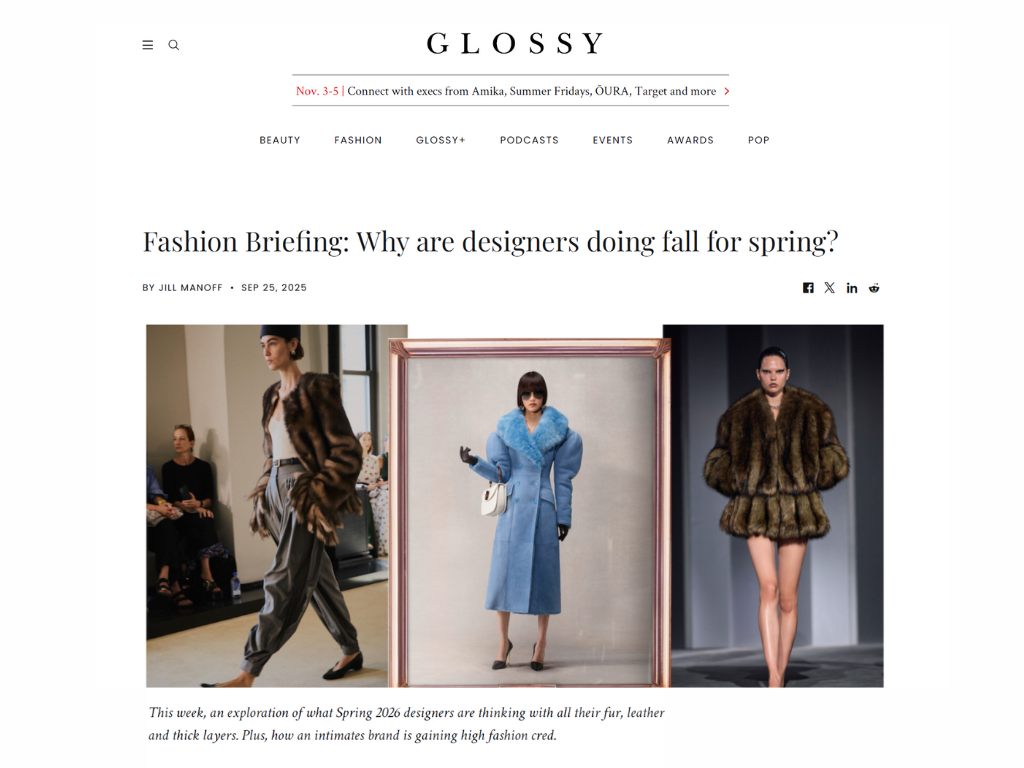
press September 2025 Fashion Briefing: Why are designers doing fall for spring?
Glossy by Jill ManoffAchim sheds light on why designers’ spring collections are leaning towards fall fashion.
During the recent Spring/Summer 2026 Fashion Weeks, it was notable that designers deviated from the designated season and showcased a variety of cold-weather items and materials. With many new creative directors making their debut, Achim notes that brands are trying to strike a balance between embracing newness and playing it safe in an uncertain macroeconomic climate, often favoring more conventional pieces. He adds that this more cautious approach best reflects current consumer sentiment, and that fall-inspired fashion feels more intuitive as many regions head into winter. Achim further shares his thoughts on the current luxury downturn and gives an outlook on how long the situation might persist.
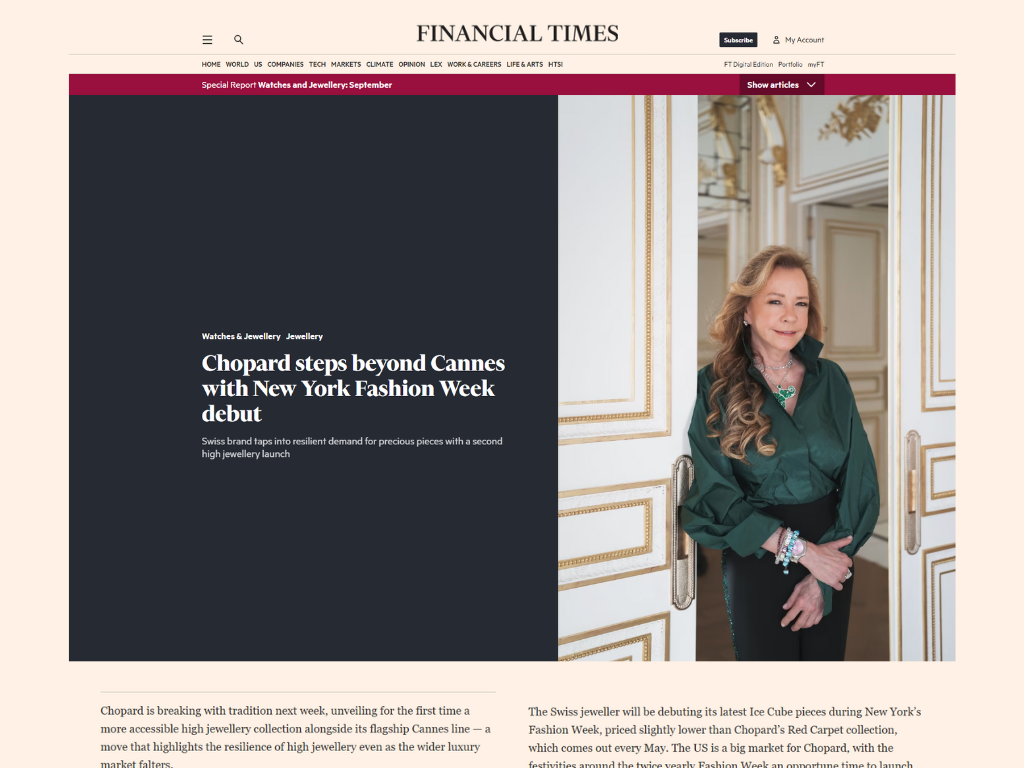
press September 2025 Chopard steps beyond Cannes with New York Fashion Week debut
Financial Times by Ming LiuAchim comments on Swiss jewelry brand Chopard's expansion into accessible high jewelry.
Chopard is moving to broaden its high jewelry offering with a more accessible collection, its second launch within a year. Achim notes this taps into resilient demand at a time when price inflation has pushed much of luxury higher, leaving jewelry looking relatively affordable and increasingly attractive.
He points out that only heritage players like Chopard can truly capitalize on this dynamic. For them, it’s a natural and low-risk extension of their identity. However, he cautions that demand is ultimately limited. Even ultra-wealthy clients have only so much capacity to spend, and once broader luxury spending returns, high jewelry will face tougher competition for their attention.
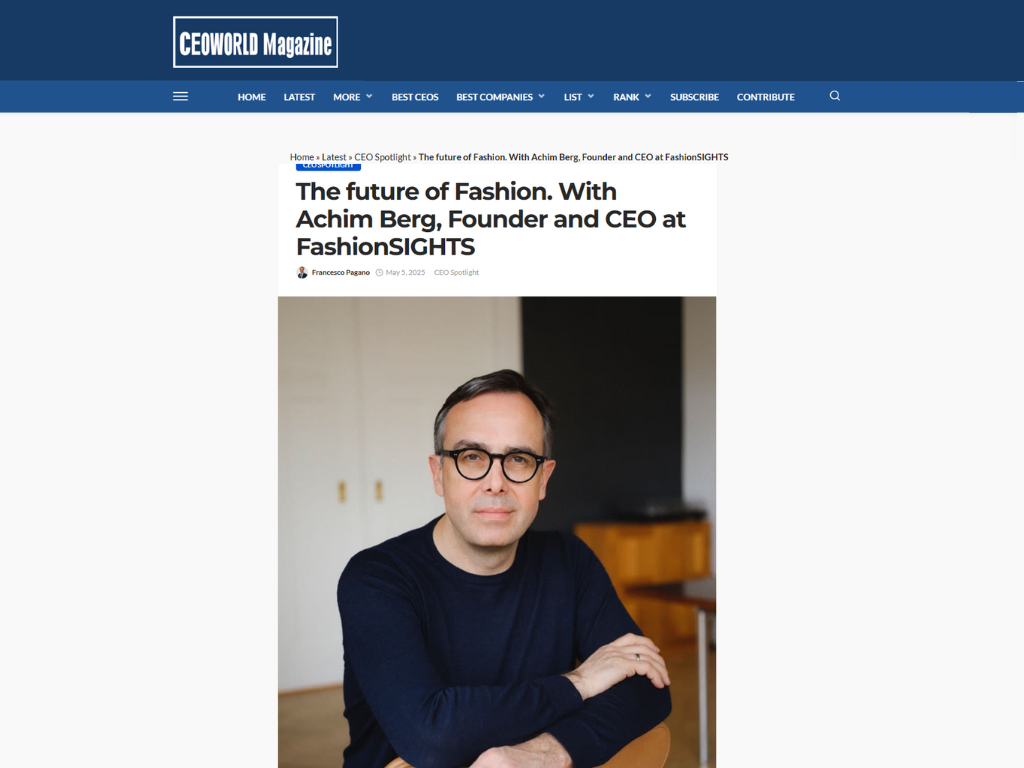
press May 2025 The future of Fashion
CEO World Magazine by Francesco PaganoAchim Berg reflects on fashion’s future and his mission to reshape it.
He shares his decision to found FashionSIGHTS, an independent think tank dedicated to rigorous research, strategic advisory across the fashion and luxury sectors. Berg praises Giorgio Armani for his timeless integrity and enduring influence while always having stayed true to its nature and seeing him as a benchmark for future generations of designers. He discusses that fashion must blend creativity with digital progress and deeper consumer engagement while preserving its craftsmanship roots. Looking ahead, Berg predicts 2025 will be a transition year, urging brands to reset, rethink, and rebuild amid U.S. market uncertainty.
